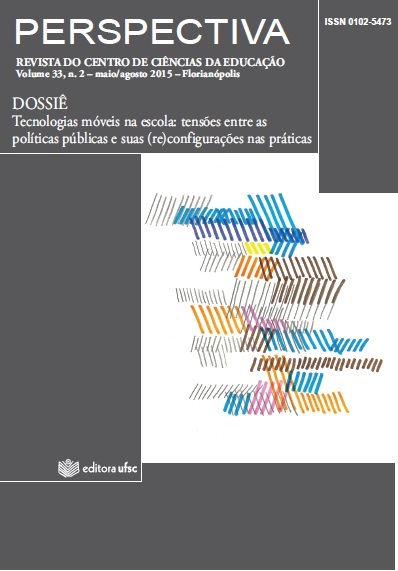ECA and violence in class: vulnerability of the Brazilian school
DOI:
https://doi.org/10.5007/2175-795X.2015v33n2p789Abstract
Abstract
This is a exploratory quantitative and qualitative research about school violence production, mainly when it is committed by teachers against children and adolescents, since it demonstrates the vulnerability of the institution caused by the violence. The goal is to understand the violence committed by teachers in the classroom in face of the Child and Adolescent Statute (ECA) and the violence production mechanism, from this network. The sources were composed of ECA and 184 school stories produced in 2004, 2007 and 2010 by Pedagogy course students, offered by the College of Science and Arts – Universidade EstadualPaulista Júlio de Mesquita Filho (UNESP) in the campus of Araraquara, state of São Paulo. The narratives were carried out through the inflexion to the Content Analysis technique (BARDIN, 1977), setting a categorical analysis, which allowed an empirical basis that refers to the requirements of ECA. The results highlighted that teachers commit violence against students in many ways and for different reasons at all educational levels; the verbal violence is the most committed one; the context of the situations in which this violence occurs happens specially toward learning; the most affected group is aged 8 or 9 years old, which corresponds to the 3rd grade of Elementary School Cycle I; teachers don’t respect ECA regarding the teacher-student relationship. This set of factors produces the school vulnerability.
Keywords: Violence. Teacher-Student Relationship. Statute of Child and Adolescent.
Downloads
Published
How to Cite
Issue
Section
License
This journal provides open access to all of it content on the principle that making research freely available to the public supports a greater global exchange of knowledge. Such access is associated with increased readership and increased citation of an author's work. For more information on this approach, see the Public Knowledge Project, which has designed this system to improve the scholarly and public quality of research, and which freely distributes the journal system as well as other software to support the open access publishing of scholarly resources. The names and email addresses entered in this journal site will be used exclusively for the stated purposes of this journal and will not be made available for any other purpose or to any other party.
The Perspectiva allow the author(s) yo hold the copyright without restrictions as well as publishing rights. If the paper will be republished later in another format, the author(s) should inform that it has originally been published as article in Perspectiva Journal and quote the complete references.



